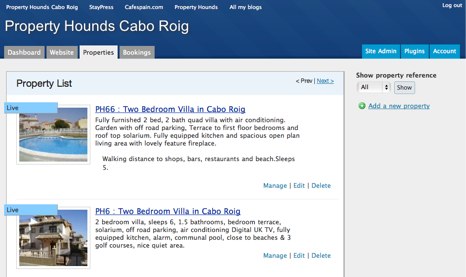Over the last couple of years I’ve been working a lot with these four applications – WordPress, CakePHP, SugarCRM, and RT. Each of these is beautiful in its own way. Each of these tools is an Open Source Software. Each of these tools has a large community. Each of these tools has a free and commercial support and development. Each of these can be used in a number of ways to solve a whole range of problems. Let me briefly introduce each one of them.
Month: May 2008
More on PHP
I’ve recently posted some of my thoughts on PHP. If you enjoy the topic, here is an excellent post over at Coding Horror, which reminds why PHP sucks so badly and also why it will stick around for some time to come.
Annoying software
Slashdot is running the post about annoying software. The fact that Slashdot crowd mostly consists of computer geeks is sort of a guarantee for some interesting comments.
With my Fedora 9 saga I had to review and try a lot of new software. Needless to say, I found quite a few annoying bits. Here is a brief list, just to give you an idea:
- Clock applet in Gnome. It shows calendar with Sunday being first day of the week. If you don’t like it, you’ll have to recompile your locale to change it. This one is cancelled out though by an excellent support of Google Calendar (or, for that matter, any other web published calendar).
- Metacity window manager in Gnome. Window titles are displayed in the middle. This is really annoying for those of us who are used to seeing them on the left. There is no option to change this setting either in GUI or in GConf.
- Pidgin new message notification. I once had it popping up nice looking bubbles, but I don’t remember how I managed to do it. I also don’t remember how I managed to break it. And I have no idea to bring them back. I really miss them though.
- WordPress 2.5 post editing screen. It has been much reworked in the latest version and looks and feels so much better. However, the list of categories was moved from a really convenient location on the right of the screen to a really inconvenient location at the bottom of the screen.
- FileZilla FTP manager. This one drives me nuts with server connections. It either disconnects every 40 seconds when being idle. Or it keeps multiple connections open forever and most FTP servers block me out temporary.
- Request Tracker (RT3). Works perfectly with queues and tickets, but annoys the heck out of me when I need to do something with users. Users aren’t first level citizens, like tickets.
- SugarCRM. Excellent business tool, with lots of small annoyances, like not being able to set default user role, disable theme selector everywhere, change logos to company ones, lock down the functionality, etc. Most of these are easily fixable. But some aren’t as trivial as they may sound or seem.
- Google Reader. This one annoys me a bit (but often) when I want to leave a few items in the feed unread and go deeper into archives. Somehow it keeps marking everything I passed as read.
Now, what piece of software were you annoyed with recently?
StayPress – WordPress plugins for property management and booking
Clearskys.net has recently announced there new project – StayPress. Here is a quote from the introduction:
StayPress is a collection of plugins that will turn a standard vanilla installation of WordPress or WordPress MU into a property management and bookings system. Of course when I say Property, I actually mean any bookable resource of which there is a finite availability. So the StayPress system will be able to manage property rentals, hotel room rentals, conference rooms and centres, B and B’s, training rooms, bands, etc…
There is plenty of demand for something like that. In fact, I’ve been working on a similar project about 8 month ago. But, unfortunately, it could not have been open sourced, and it eventually collapsed under the historical baggage that it had to bring over. So, I’m glad that StayPress is coming up to fill the void.

The main web site of StayPress is not online yet, but ClearSkys blog entry had a screenshot (above).
Web site awards and trust certifications
Back in the 1990’s, when the Web just got popular, it seemed like every more or less large web site had to have a bunch of awards. Awards were the first web promotion tricks that I’ve learned of. Anyone could establish his own award. All you needed was a little image that looked like a medal or a star.
Awards were demanded by the “big guys” who wanted to show how “special” they were. And they were often taken advantage of by really small guys, who were making the awards, and used them to promote their own “award giving” web sites.
Then there were so many web awards that nobody cared about them anymore. And it was quite for some time.
The new wave started with trust certifications. Lots and lots of people on the web were followed by all sorts of scammers, spammers, crackers, hackers, and what not. Many got worried and afraid. So, the certification boom started. Trust of that, protection of this, guarantee of something, warranty of something else, etc.
Surprisingly, after all these years, so many web sites still use this non-sense. What is even more surprsing is that so many of them are prepared to pay money (and huge money in some cases) to get the award or certification. Why? That’s really beyond me.